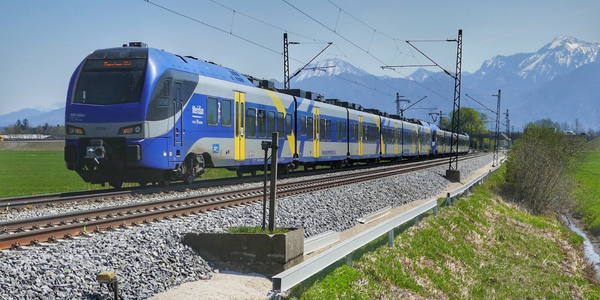Technology Category
- Platform as a Service (PaaS) - Device Management Platforms
- Robots - Wheeled Robots
Applicable Industries
- Finance & Insurance
- Railway & Metro
Use Cases
- Behavior & Emotion Tracking
- Supply Chain Visibility
Services
- Cloud Planning, Design & Implementation Services
About The Customer
Metro Bank is Britain’s first new High Street bank in over 100 years. Launched in July 2010, Metro Bank now has 27 stores across London and the South East and has plans to open up to 200 by 2020. With a focus on the customer, Metro Bank provides unparalleled levels of service and convenience to its customers. The bank is an innovator in IT, with an emphasis on enabling its 1400 colleagues across the UK to communicate and collaborate effectively. Metro Bank puts the latest Microsoft software and services to work, including the complete Office 365 Suite for email, office productivity and business applications, Dynamics CRM and Yammer. Metro Bank manages its 500 corporate Windows and Apple mobile phones using AirWatch Mobile Device Management (MDM).
The Challenge
Metro Bank, Britain’s first new High Street bank in over 100 years, was facing a significant challenge in improving employee productivity by enabling off-network access to Office 365 and Yammer. Despite having AirWatch Mobile Device Management (MDM) in place, the bank felt that the move was too risky due to the vital importance of protecting bank and customer data. The bank wanted to limit off-network access to corporate devices already managed with their AirWatch MDM deployment, but there was no straightforward way to enforce this policy with their existing tools. The bank's goal was to provide full access to Office 365 for corporate owned device users, on or off network, and to extend access to Yammer to personal device users. In the second phase, specific colleagues were to be given off-site access to the more-sensitive information within Dynamics CRM.
The Solution
Metro Bank was introduced to the Skyfence Cloud Gateway at the Infosecurity conference in London and saw the potential to resolve their Office 365 access control and security challenges. The bank deployed Skyfence as a cloud-based in-line proxy, requiring no on premise hardware or software. The team defined a policy for Office 365 that restricts access to only managed corporate laptops and Windows mobile devices. A self-service enrollment was decided upon, enabling users to sign up for remote cloud access the first time they accessed Office 365. By leveraging AirWatch’s capability to send a certificate to selected devices, Skyfence was able to automatically determine which users were qualified to enroll for full Office 365 access and which users and devices could only access Yammer. Metro Bank implemented the full Skyfence Cloud Gateway to provide visibility into cloud application usage, including what data has been accessed, when and by whom. They also used the security and protection features of the Skyfence Cloud Gateway to detect behavioral anomalies with app usage and to alert or block suspicious events in real-time.
Operational Impact
Quantitative Benefit

Case Study missing?
Start adding your own!
Register with your work email and create a new case study profile for your business.
Related Case Studies.

Case Study
Real-time In-vehicle Monitoring
The telematic solution provides this vital premium-adjusting information. The solution also helps detect and deter vehicle or trailer theft – as soon as a theft occurs, monitoring personnel can alert the appropriate authorities, providing an exact location.“With more and more insurance companies and major fleet operators interested in monitoring driver behaviour on the grounds of road safety, efficient logistics and costs, the market for this type of device and associated e-business services is growing rapidly within Italy and the rest of Europe,” says Franco.“The insurance companies are especially interested in the pay-per-use and pay-as-you-drive applications while other organisations employ the technology for road user charging.”“One million vehicles in Italy currently carry such devices and forecasts indicate that the European market will increase tenfold by 2014.However, for our technology to work effectively, we needed a highly reliable wireless data network to carry the information between the vehicles and monitoring stations.”

Case Study
Building Smart IoT-Connected Railways
• Difficult environment. Communications equipment on trains must function properly in harsh conditions, such as environment temperatures ranging from -25°C to +85°C, according to the EU standard EN50155.• Railway regulations. All products in a train must adhere to strict standards, relating to working vibration, power consumption, and lifetime.• Lengthy process. Time to market in the railway industry can take years from concept to mass production, so product design requires a solid long term vision.

Case Study
Safety First with Folksam
The competitiveness of the car insurance market is driving UBI growth as a means for insurance companies to differentiate their customer propositions as well as improving operational efficiency. An insurance model - usage-based insurance ("UBI") - offers possibilities for insurers to do more efficient market segmentation and accurate risk assessment and pricing. Insurers require an IoT solution for the purpose of data collection and performance analysis

Case Study
Connected Transportation: A Smarter Brain for Your Train with Intel
A modern locomotive, for example, has as many as 200 sensors generating more than a billion data points per second. Vibration sensors surround critical components, video cameras scan the track and cab, while other sensors monitor RPM, power, temperature, the fuel mix, exhaust characteristics, and more.Most of today’s locomotives lack sufficient on-board processing power to make full use of all this data. To make matters worse, the data from different subsystems, such as the brakes, fuel system, and engine, remain separate, stored in isolated “boxes” that prevent unified analysis. The data is available, but the technology needed to process it in the most effective manner is not. As new sensors are added to the machine, the problem escalates.

Case Study
Smooth Transition to Energy Savings
The building was equipped with four end-of-life Trane water cooled chillers, located in the basement. Johnson Controls installed four York water cooled centrifugal chillers with unit mounted variable speed drives and a total installed cooling capacity of 6,8 MW. Each chiller has a capacity of 1,6 MW (variable to 1.9MW depending upon condenser water temperatures). Johnson Controls needed to design the equipment in such way that it would fit the dimensional constraints of the existing plant area and plant access route but also the specific performance requirements of the client. Morgan Stanley required the chiller plant to match the building load profile, turn down to match the low load requirement when needed and provide an improvement in the Energy Efficiency Ratio across the entire operating range. Other requirements were a reduction in the chiller noise level to improve the working environment in the plant room and a wide operating envelope coupled with intelligent controls to allow possible variation in both flow rate and temperature. The latter was needed to leverage increased capacity from a reduced number of machines during the different installation phases and allow future enhancement to a variable primary flow system.

Case Study
Automated Pallet Labeling Solution for SPR Packaging
SPR Packaging, an American supplier of packaging solutions, was in search of an automated pallet labeling solution that could meet their immediate and future needs. They aimed to equip their lines with automatic printer applicators, but also required a solution that could interface with their accounting software. The challenge was to find a system that could read a 2D code on pallets at the stretch wrapper, track the pallet, and flag any pallets with unread barcodes for inspection. The pallets could be single or double stacked, and the system needed to be able to differentiate between the two. SPR Packaging sought a system integrator with extensive experience in advanced printing and tracking solutions to provide a complete traceability system.



